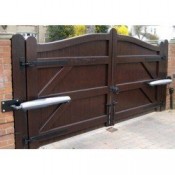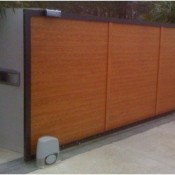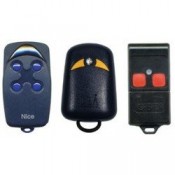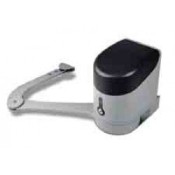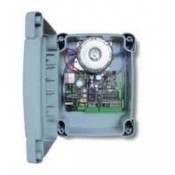-
Your shopping cart is empty!
Menu
Your shopping cart is empty!
Driveway gate automation systems turn manual gates into automated gates. With a gate automation system, you don't need to open and close gates by hand anymore. Powerful gate motors do all the work for you. Clever electronic controls manage the automation system to open and close your gates so the driveway is either completely clear or completely blocked off.
Hand-held remote-control transmitters fit easily in a pocket or handbag and let you open or close the automated gates at the touch of a button. Access control systems ensure that you can choose who gets through your gates from inside your home. Opt for a gate automation system to enhance security and convenience today.
Gates at the entrance of your driveway give you a way to restrict who can drive onto your property. They keep children and pets away from traffic and passers-by, and they help discourage burglars. But without gate automation, gates are often left open. It becomes too much effort to open and close gates manually. And if they’re left open, they’re not doing their job. However, automatic gates open and close at the touch of a button.
When you leave or come home, you don’t have to get out of your car to operate your gate automation system. With the right access control system, you can even monitor and operate automatic gates from anywhere in the world.
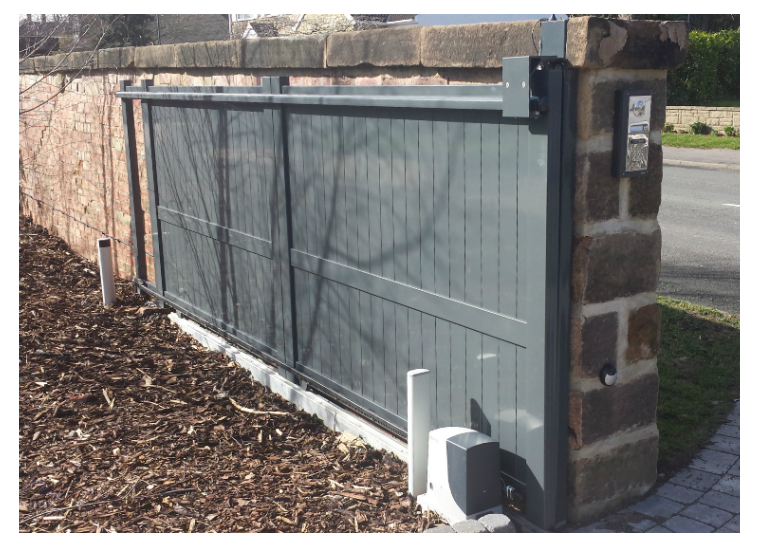
Automatic gates come in many designs, but for driveway gate automation systems, two configurations dominate. These are sliding and swing gates. Sliding gates, typically one large gate, slide across the driveway entrance. In contrast, swing gates are often twin gates that open from the middle, swinging into the driveway. If you want the look of swing gates but don't have the space for them sliding gate designs can mimic the appearance of swing gates when closed.
All gates need room to move. Swing gates need a level or falling driveway, while sliding gate automation moves the gate across the driveway. So enough space is needed for the gate to slide into to clear the entrance. Automatic sliding gates move on wheels along a track, whereas automatic swing gates rotate on sturdy hinges.
Our gate automation solutions include kits, motors and accessories for sliding gates and swing gates. Sliding gate motors rotate a toothed cog that meshes with a toothed rack installed along the gate’s length. As the cog rotates it moves the gate. For swing gates, gate motors are installed above ground or underground and use mechanical arms and rods to move the gates.
However, some swing gate systems need to be stronger than others when they connect to the gate nearer the hinge. Fully boarded swing gates can face increased resistance from strong winds.
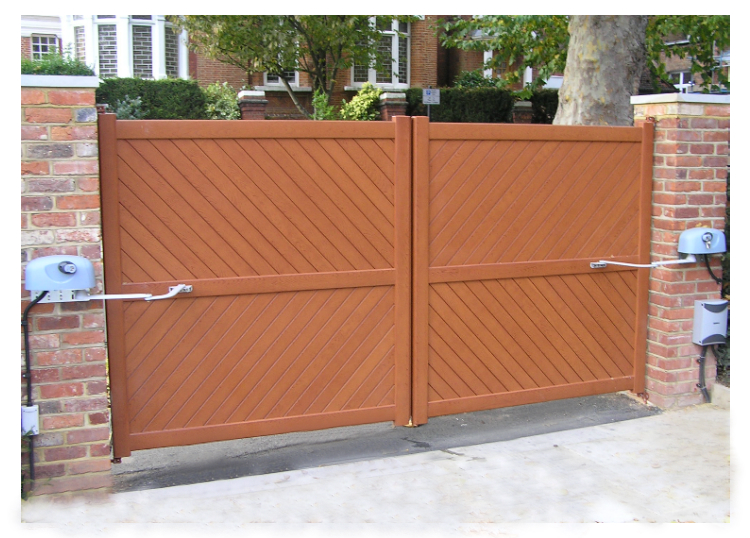
For enhanced security and efficiency, considering different gate kits and gate systems is essential. LinkCare offers a comprehensive range of high-quality gate motors, double gates, and other automation solutions. View our selection of automated gates and gate kits to find the perfect fit for your needs and boost your property's safety with our expert gate automation services.
Any gate automation system design needs to be influenced by a safety audit that considers usage, access and the moving gates proximity to static features such as walls. Sliding gates moving across stationary surfaces can cause shearing and crushing injuries. On the other hand, swing gates can cause pinching at the hinges and impact injuries as they swing open.
Sliding gates shouldn't run on slopes. The motor works harder to push them uphill and to slow their movement downhill. A qualified installation engineer will ensure the safe setup of your gate.
For all your gate automation needs, from complete gate automation systems to complete gate kits, explore LinkCare's comprehensive automation system solutions to protect and enhance your property.
Our team is ready to assist you with all your swing gate automation needs. Fill out our enquiry form, call us at 01895 232 626, or email sales@linkcare.net for expert advice and support. Choose LinkCare today and experience the difference in professional gate automation solutions.
These cookies are required for the website to run and cannot be switched off. Such cookie are only set in response to actions made by you such as language, currency, login session, privacy preferences. You can set your browser to block these cookies but our site may not work then.
These cookies are usually set by our marketing and advertising partners. They may be used by them to build a profile of your interest and later show you relevant ads. If you do not allow these cookies you will not experience targeted ads for your interests.
These cookies allow us to measure visitors traffic and see traffic sources by collecting information in data sets. They also help us understand which products and actions are more popular than others.

